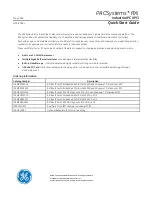
31/52
L3016
1SDH000559R0002
ABB SACE
SACE PR021/K
In the example, the PR021/K has been set as follows:
•
Self-test function disabled
•
K51 configuration = A-A-A-A
•
Master mode
•
Baud rate = 19.2Kb/s
•
Stand-by function not active
•
Manual Reset mode
•
Latch mode disabled
•
Local bus not terminated
5.11.2.
Signals
The signals (K51/1...K51/8) for the SACE PR121/P protection release may be divided into 3 modes: Normal, Latch and
User. A description of the signals in these modes is given below.
5.11.2.1.
Normal mode (see par. 4.5.1)
The dip-switches are to be set as follows: Dip-switch no. 5 = A, Dip-switch no. 11 = OFF.
Note 1: Following a TRIP, the status of the signals is frozen signalling the trip (K51/7) and the protection that caused
it.
Note 2: The signals bearing this marking are not frozen as indicated in Note 1.
Note 3: If dip switch no. 10 (RESET) is set to its “MAN” position, the signals may be reset as described in par. 4.2.
Note 4: If dip switch no. 10 (RESET) is set to its “AUT” position, the signals are reset automatically when the trip on
the protection unit is reset (see par. 4.2).
Electric
contact
Event that caused closing of the relay
Selection of dip-switches
no. 2, 3, 4
K51/1
L protection alarm or trip (overload)
---
K51/2
S protection alarm or trip (selective short-circuit)
---
K51/3
I protection trip (instantaneous short-circuit)
---
K51/4
G protection alarm or trip (earth fault)
---
K51/5
Communication problems on the local bus (bus KO)
---
K51/6
L function prealarm (overload)
---
K51/7
Protection release TRIP alarm
---
A = Backup protection alarm (Note 2)
dip no. 4 = A
B = Hardware alarm
dip no. 4 = B
K51/8
















































